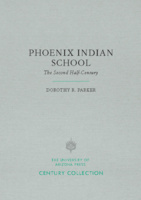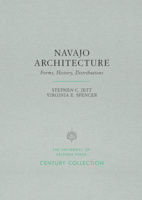The University of Arizona Press is the premier publisher of academic, regional, and literary works in the state of Arizona. They disseminate ideas and knowledge of lasting value that enrich understanding, inspire curiosity, and enlighten readers. They advance the University of Arizona’s mission by connecting scholarship and creative expression to readers worldwide.
Showing 431-440 of 1,700 items.
Where the Strange Roads Go Down
The University of Arizona Press
Mary and Fred del Villar's desire to travel "the strange roads" of rural Mexico led to a 750-mile walk from Lake Patzcuaro to the Pacific Ocean in 1951. For three months they endured sun, scorpions, floods, and hunger, but also found warm friendship everywhere they went.
Use-Wear Analysis of Flaked Stone Tools
The University of Arizona Press
This major contribution to archaeological method details the use-wear analysis of a set of stone tools recovered during the excavation of Cassegros Cave, in southwestern France. The study combines low-power and high-power microwear approaches and develops their potential for use on a wider range of lithic and contact materials than have been reported previously.
The People of Sonora and Yankee Capitalists
The University of Arizona Press
Examines how the advent of North American dollars between 1882 and 1910 helped reshape the economic, social, and political contours of a Mexican province on the border of Arizona.
The Origin and Development of the Pueblo Katsina Cult
The University of Arizona Press
Examines the concept of the katsina and the religion that developed around it, focusing on what makes katsinas unique, why the concept was developed, and what adaptive value it had for prehistoric Pueblo culture.
The Discovery of New Mexico by the Franciscan Monk Friar Marcos de Niza in 1539
By Adolph F. Bandelier; Edited by Madeleine Turrell Rodack
The University of Arizona Press
The Chicanos
As We See Ourselves
Edited by Arnulfo D. Trejo
The University of Arizona Press
Thirteen Chicano scholars draw upon their personal experiences and expertise to paint a vivid, colorful portrait of what it means to be a Chicano.
Piman Shamanism and Staying Sickness (Ká:cim Múmkidag)
The University of Arizona Press
This definitive study of shamanic theory and practice was developed through a four-person collaboration: three Tohono O’odham Indians—a shaman, a translator, and a trained linguist—and a non-Indian explicator. It provides an in-depth examination of the Piman philosophy of sickness as well as an introduction to the world view of an entire people.
Phoenix Indian School
The Second Half-Century
The University of Arizona Press
Provides a history of the Phoenix Indian School from 1930 until the graduation of its final class of nineteen students in 1990. Dorothy Parker tells how the Phoenix Indian School not only adapted to policy changes instituted by the federal government but also had to contend with events occurring in the world around it, such as the Great Depression, World War II, and the advent of the "red power" movement.
Persistent Peoples
Cultural Enclaves in Perspective
Edited by George Pierre Castile and Gilbert Kushner
The University of Arizona Press
What constitutes a people? Persistent Peoples draws on enduring groups from around the world to identify and analyze the phenomenon of cultural enclavement. While race, homeland, or language are often considered to be determining factors, the authors of these original articles demonstrate a more basic common denominator: a continuity of common identity in resistance to absorption by a dominant surrounding culture.
Navajo Architecture
Forms, History, Distributions
The University of Arizona Press
Complete explication of hogan and house forms, root forms, summer structures and more make this possibly the most complete study ever made of the folk architecture of a tribal society to date.
Stay Informed
Subscribe nowRecent News







